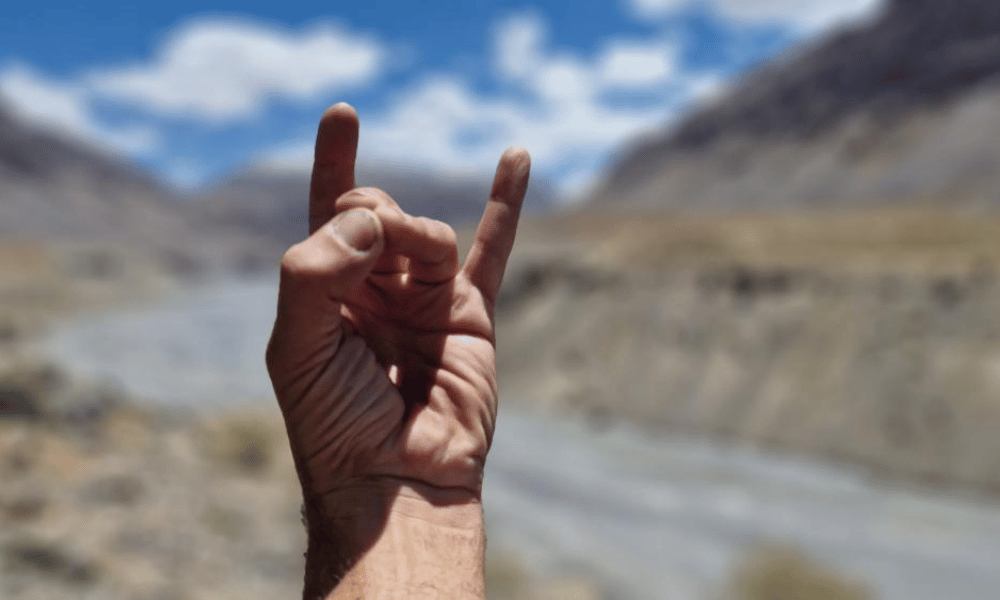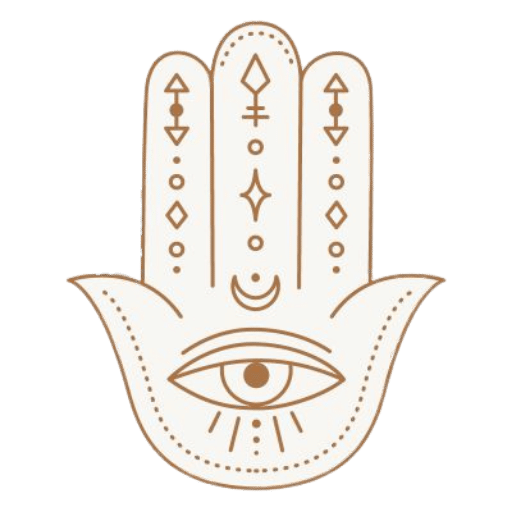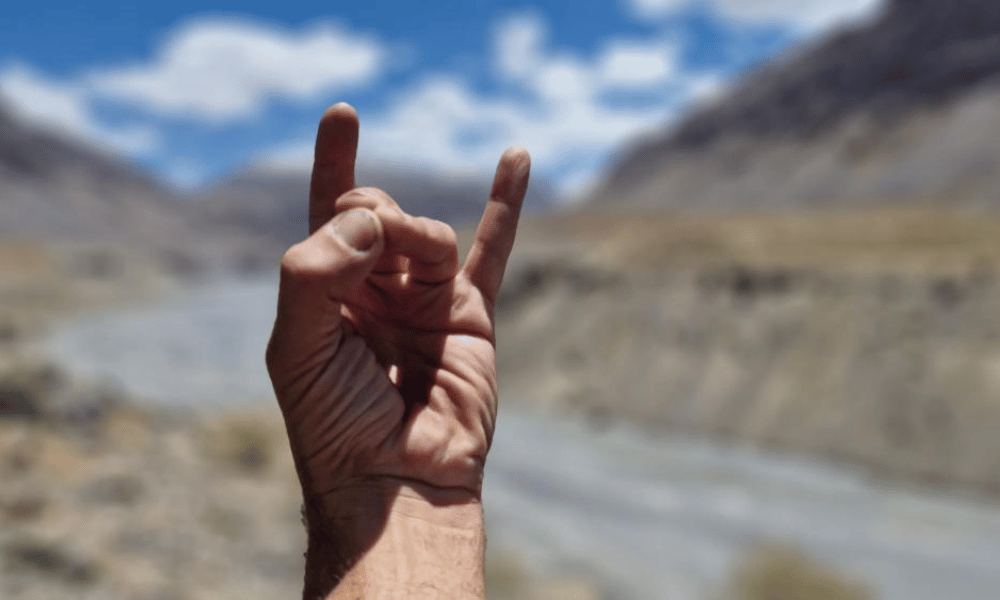
Learn about the benefits of Apana Vayu Mudra in purifying and harmonizing energy.
Introduction to Apana Vayu Mudra
Apana Vayu Mudra is a powerful mudra that is formed by bringing together the tips of the middle finger, ring finger, and thumb while keeping the other fingers gently extended. The term “Vayu” in Sanskrit equates to “wind,” while its root, ‘va,’ signifies “that which flows.” A Vayu, therefore, represents an energy force that directs various bodily functions and activities through its flow. This mudra aims to balance and harmonize the Apana Vayu, which is responsible for the elimination and purification processes within our system.
How to Perform Apana Vayu Mudra
To perform Apana Vayu Mudra, follow these steps:
- Sit comfortably in a cross-legged position or on a chair with your spine straight.
- Relax your body and take a few deep breaths.
- Bring your hands in front of your lower abdomen.
- Gently touch the tips of your middle finger and ring finger to the tip of your thumb.
- Keep your index finger and little finger extended.
- Maintain a relaxed and gentle pressure while holding this mudra.
- Breathe deeply and slowly, focusing on the flow of energy within your body.
Understanding the Symbolism
In Apana Vayu Mudra, each finger represents an element and its associated qualities. The middle finger represents the element of space or ether, the ring finger symbolises the element of earth, and the thumb signifies the element of fire. By bringing these fingers together, we create a union of these elements, promoting balance and harmony.
What is Apana Vayu?
In Ayurveda and yoga philosophy, Apana Vayu is an integral part of the body’s energy system known as the Prana-Vayu or Pancha Prana system. It is one of the five types of prana, or life force. It is responsible for governing the downward and outward movement of energy. Apana Vayu controls the elimination of waste products, aids in digestion, and regulates the reproductive and urinary systems. Apana Vayu Mudra is believed to enhance the flow of this vital energy and support its functions.
These five main streams of vital energy are:
- Prana-Vayu
- Apana-Vayu
- Samana-Vayu
- Udana-Vayu
- Vyana-Vayu.
To read more about what each of the vital energies are and learn a practice you can perform at home to balance them click here.
Yoga Postures and Apana Vayu Mudra
Apana Vayu Mudra can be practised as a standalone mudra or as part of your regular yoga or meditation practice. You can perform it in a standing or seated position or even while lying down.
Practising calming and tension-releasing poses like forward bends and seated twists strengthens Apana Vayu. Asanas that massage the digestive system and open the pelvis will work wonders. In standing yoga poses focus on engaging the leg muscles and grounding down.
Suggested Yoga Postures
Seated Forward Bend (Paschimottanasana)
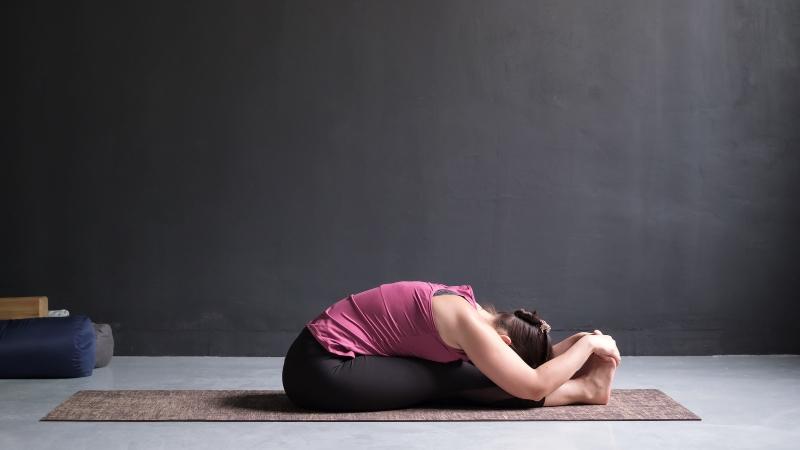
This pose stimulates the pelvic and lower abdominal region, where Apana Vayu resides, promoting effective elimination and purification.
How to perform
Step 1: Begin in a seated position: Sit on a flat surface, extending your legs out in front of you. Make sure your spine is straight and your legs are touching each other. Your hands should rest on your thighs.
Step 2: As you breathe in, stretch both arms above your head without bending your elbows. Your gaze should follow your hands.
Step 3: On an exhale, bend forward from the hip joints, keeping your spine elongated. Move your chin toward your toes.
Step 4: Extend your hands and try to touch your toes. If you can’t reach your toes, place your hands wherever they reach comfortably on your legs.
Step 5: Keep your gaze on your toes and continue to press your belly into your legs. Stay in this pose for a few seconds or as long as comfortable.
Step 6: On an inhale slowly lift your body, extending your spine as you return to the seated position.
Child’s Pose (Balasana)

A restorative pose that allows for a deeper connection with the breath, fostering a balance of energy flows, including Apana Vayu.
How to perform
Step 1: Begin by positioning yourself on your hands and knees on a comfortable, flat surface. Your knees should be spread wider than your hips and your toes should touch each other.
Step 2: Slowly push your hips back until they rest on your heels. Keep your hands resting on the floor in front of you.
Step 3: As you continue to sit back on your heels, lower your forehead to touch the floor. Your chest should rest on or between your thighs.
Step 4: Stretch your arms out in front of you along the floor. You can also rest them alongside your body with the palms facing upward if that’s more comfortable.
Step 5: Stay in this position for a few breaths or as long as you find it comfortable. It’s a resting pose, so feel free to stay in it for longer periods.
Step 6: To come out of the pose, use your hands to push yourself back up to a seated position.
(Tree pose) Vrikshasana
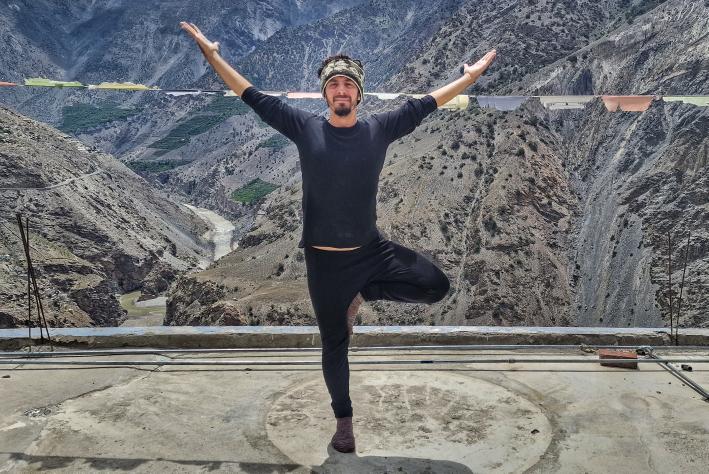
Vrksasana can be particularly beneficial for Apana Vayu because of its grounding and stabilising nature.
How to perform
Step 1: Begin by standing tall and straight with your feet hip-width apart and your arms by your side. This is also known as Tadasana or Mountain Pose.
Step 2: Slowly shift your weight onto your right foot, grounding down into the floor.
Step 3: Bend your left knee, and with your left hand, take hold of your left ankle.
Step 4: Place the sole of your left foot on the inside of your right thigh or calf, making sure to avoid the knee. If needed, you can place your foot on the ankle with the toes on the ground for balance.
Step 5: Stand tall and find your balance. Once balanced, bring your hands together in a prayer position at your chest, known as Anjali Mudra.
Step 6: When you feel stable, extend your arms above your head, reaching towards the sky. Your gaze can be forward, or for more of a challenge, upwards towards your hands. Maintain the pose for a few breaths, or as long as it’s comfortable.
Step 7: Gently bring your hands down to your chest, release your leg, and come back to Mountain Pose. Repeat the process with your left foot.
Apana Vayu and Pranayama
Exhaling fully during any breathing practice will stimulate and balance Apana Vayu.
This makes Kapalabhati, a pranayama technique, a fantastic practice for Apana Vayu. Its focus on exhalation strengthens the removal of metabolic wastes and combats lethargy and blockages, activating the base of Apana in the lower abdomen.
Kapalabhati, also known as skull-shining breath, is characterised by a vigorous exhalation from the stomach, immediately followed by a passive inhalation. The inhale-exhale process isn’t symmetrical—the exhalation appears as a quick, rhythmic note, and the inhalation is the response. Therefore, it’s essential to relax completely and promptly after exhaling.
For beginners, daily practice can involve one to three cycles of 7 to 11 breaths at a pace of one breath every two seconds, with rest periods in between. Each week, add 5 to 10 breaths per cycle to expand your capacity and incrementally increase your speed to around one breath per second. Eventually, you may maintain this pace for one to three minutes. If you experience dizziness, a side cramp, or lose rhythm, take a break and resume normal breathing. For your next attempt, consider fewer breaths or seek a teacher’s advice to improve your technique. Women should not practise this breath when menstruating.
When Not to Practice Apana Vayu Mudra
It’s important to be aware of situations when practising Apana Vayu Mudra is not recommended. Avoid this mudra under the following circumstances:
- During active labour or if you have a history of premature labour.
- If you have recently undergone abdominal surgery or have abdominal injuries.
- When experiencing acute diarrhoea or other gastrointestinal disorders.
- If you are feeling excessively cold or experiencing chills.
Conclusion and Integration of Apana Vayu into Daily Life
In conclusion, Apana Vayu Mudra is a powerful hand gesture that holds immense benefits for our physical, mental, and energetic well-being. By incorporating this mudra into our daily practice, we can tap into its potential to enhance digestion, balance energy, boost immunity, alleviate menstrual discomfort, and promote inner calm. Remember to practice this mudra with awareness, respect your body’s limitations, and seek guidance if needed.

